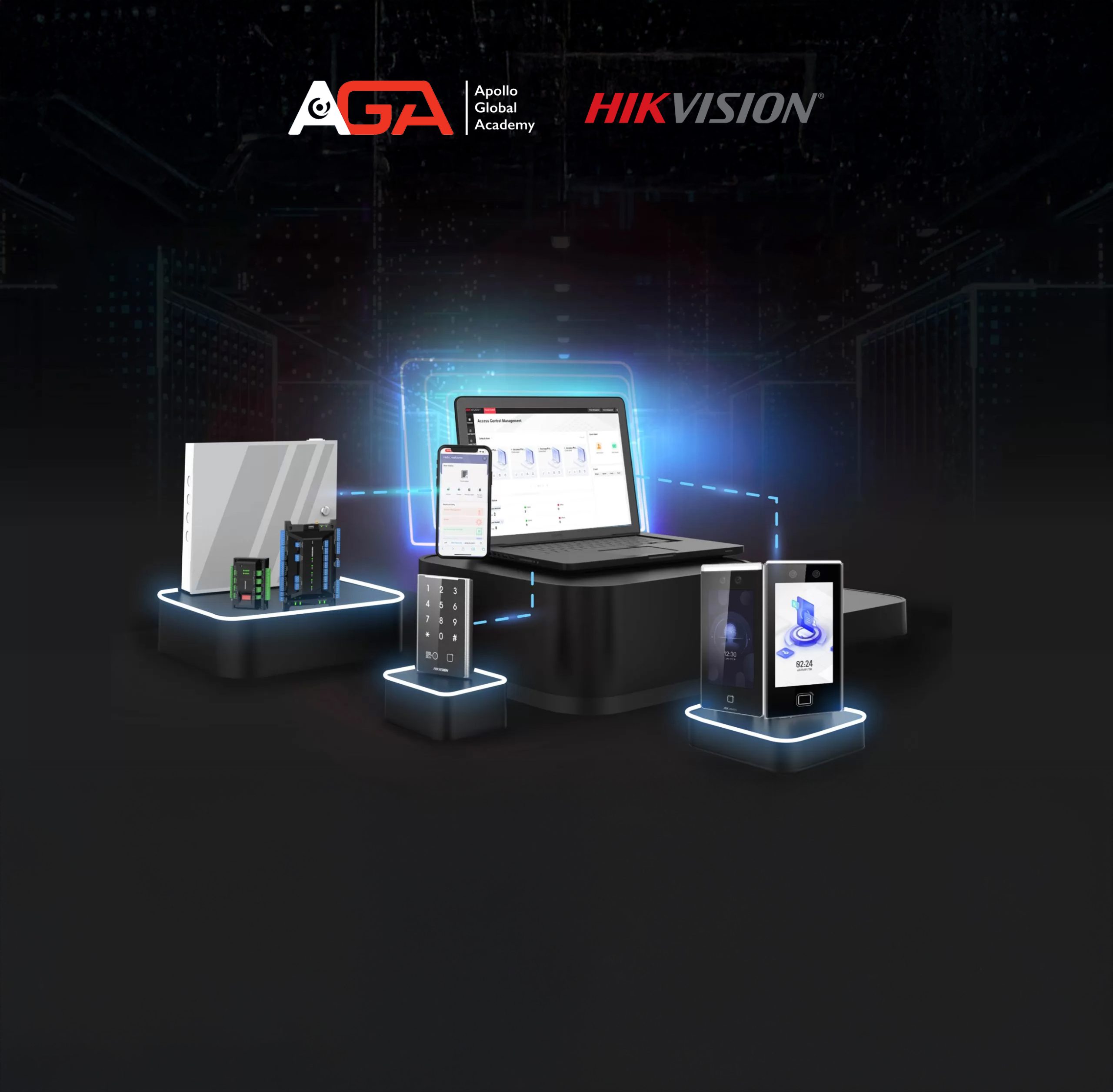
Workforce Skills Qualifications (WSQ) + Hikvision Courses
Principles of Access Control System +
Hikvision Certified Security Associate - ACS
COURSES DETAILS
- Duration: 4 days
- Award: WSQ Statement of Attainment + Hikvision Certified Associate - ACS
- Pre-Requisites: GCSE “N” Level pass in English and Mathematics. Broadly equivalent to WPL Level 5 and WPN – Intermediate Level. Anyone with an interest may benefit from a solid foundation of knowledge provided by this course
WSQ + HIKVision Courses
- Principles of Access Control System + Hikvision Certified Security Associate – ACS
- Principles and Components of Security Surveillance Information Communications Systems (CCTV 1) + Hikvision Certified Security Associate – CCTV
- Application of Security Command Control Centre Operation + Hikvision Certified Security Associate – VMS
Course Information
Apollo Global Academy partners with Hikvision to provide dual certification as per follows:
- The WSQ Statement of Attainment (SOA) for Security Technology (ACS) refers to a credential awarded under Singapore’s Workforce Skills Qualifications (WSQ) system. The WSQ system, developed by Skills Future Singapore, is designed to provide skills training and certification across various industries to enhance employability and career progression.
- The Hikvision Security Associate (HSA) – ACS certification can enhance a professional’s credibility in the security industry. It provides recognition of their expertise with Hikvision products and can improve career prospects. This certification is a stepping stone for those looking to deepen their knowledge and advance to more specialized Hikvision certifications, such as the Hikvision Certified Security Professional (HCSP) or Hikvision Certified Security Expert (HCSE).
- Understanding Access Control Concepts:
- Explain the fundamental principles of access control, including authentication, authorization, and accountability.
- Differentiate between various types of access control systems (e.g., standalone, networked, biometric, and RFID-based systems).
- Hikvision Access Control Product Knowledge:
- Identify and describe Hikvision’s range of access control products, including controllers, readers, and software solutions.
- Understand the features, capabilities, and applications of Hikvision access control devices, such as card readers, biometric scanners, and integrated security solutions.
- System Design and Planning:
- Develop a comprehensive plan for deploying an access control system using Hikvision products.
- Consider factors such as site layout, user requirements, and integration with other security systems (e.g., video surveillance) when designing an access control solution.
- Installation and Configuration:
- Perform the installation and wiring of Hikvision access control hardware, including controllers, readers, and door locks.
- Configure access control software to manage user credentials, set access permissions, and create access schedules.
- User Management and Reporting:
- Manage user credentials, roles, and access levels within the Hikvision access control system.
- Generate and interpret reports related to access control activities, such as access logs, attendance records, and security breaches.
- Troubleshooting and Maintenance:
- Diagnose and resolve common issues related to access control hardware and software.
- Perform routine maintenance tasks to ensure the reliable operation of the access control system, including firmware updates and hardware inspections.
- Compliance and Best Practices:
- Understand and apply relevant legal and regulatory requirements related to access control, such as data protection laws and safety regulations.
- Implement industry best practices for access control, including the principle of least privilege, multi-factor authentication, and regular security audits.
- Form access control policies for an organization, after taking into account the levels of access control required in an organisation, its access control procedures and the characteristics and limitations of the organisation’s access control equipment
- Map access points for different levels of authorized entries, after taking into account the levels of access control required in an organisation, its access control procedures and the characteristics and limitations of the organisation’s access control equipment
- Evaluate the types of access control systems to be used based on an organisation’s access control procedures, levels of access control required and the characteristics and limitations of access control equipment
- Explain the configuration and settings of access control based on an organisation’s access control procedures, levels of access control required and the type of access control equipment that an organisation has deployed
- Implement and monitor project implementation of access control systems and ensure that site acceptance tests meet operational requirements based on the access control equipment used
- Read and interpret access control system audit reports based on the organisation’s access control equipment, access control procedures and levels of access control
- Detect and report an access control equipment fault based on the characteristics and limitation of an organisation’s access control equipment as well as the variables affecting the type of access control systems
- Review and assess the efficiency of an organisation’s access control equipment through its access control procedures, levels of access control required, and types of access control equipment deployed
- Research and recommend new access control equipment for deployment based on an organisation’s access control procedures, characteristics and limitations of existing access control equipment deployed and the levels of access control required
Fee Details
| Course Fees | Individual Sponsored |
|---|---|
| For International Students (Full Course Fee) | $981.00 (incl. 9% GST) |
| Singapore Citizens and PRs aged 21 to 39 | $531.00 (incl. 9% GST) |
| Singapore Citizens aged 40 years and above | $351.00 (incl. 9% GST) |
| INDIVIDUAL SPONSORED TRAINEE | COMPANY SPONSORED TRAINEE |
|---|---|
SkillsFuture Credit:
PSEA:
UTAP Funding:
| Absentee Payroll (AP) Funding:
Note: Courses/Modules under Professional Conversion Programme (PCP) will not be eligible for AP funding claim |
|
|



